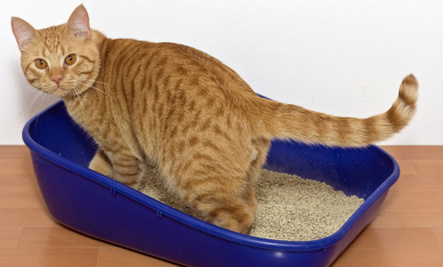As you might already know, I’m a big believer in regular veterinary exams for pets. I recently wrote about some of the “invisible” health issues that can affect pets well before the problem becomes evident. Many of you wrote in to share your stories with these conditions, and I know from personal experience with my clients that it’s easy for diseases to sneak up on them. Here are some additional problems that may come as a surprise to owners, as well as some tips on how to spot them early.
Weight Loss
This isn’t a health issue in and of itself, but unless you’ve been limiting your pet’s calories or you and your pet have recently taken up running marathons, it’s often symptomatic of an underlying problem. Weight loss can signify certain types of cancer, gastrointestinal disease, intestinal parasites, organ failure or hyperthyroidism.
I find that many people never weigh their pets. The only time the animals see a scale is at the veterinary clinic. We see cats all the time who have lost 25 percent of their body weight without their owners noticing the change.
Besides a veterinary exam once or twice a year — the older pets get, the more often they should be seen — you can keep tabs on your pet’s weight a couple of different ways.
One is to weigh him monthly. If he’s small, step on the scale first by yourself and then again while you’re holding him. Subtract the difference, and you have his weight. Make a note of it on a calendar, so you can notice any major fluctuations. Remember that a loss of a single pound can be 10 percent of the body weight of a cat or small dog.
For larger dogs who don’t fit in your arms or on your scale, make a habit of stopping by your veterinarian’s office for a quick weigh-in. This isn’t a visit that should incur a charge.
You can also monitor your pet’s body condition with the hands-on test. Lay your hands on him, thumbs pointing up along the spine with your fingers splayed down over his ribs. You should be able to feel the ribs through a light layer of muscle and fat. If they seem to become more prominent, take your pet in for an exam.
Bladder Stones
This painful condition is one of the most common ones we see in cats, and it isn’t uncommon in dogs. Signs include blood in the urine, straining to urinate and frequent urination, but owners may not notice these signs unless the cat ups the ante by starting to urinate outside the litterbox, usually on the bathroom counter or in the sink or bathtub. Some cats with bladder stones don’t show signs at all, although your veterinarian may be able to feel large stones during a physical exam.
Depending on their composition, one of the best things you can do to help prevent stones is to encourage him to drink more water. That dilutes urine, so the bladder is a less friendly environment for stone formation. Feeding canned food, which is generally about 70 percent water, is one way to get more water into your cat. Another is to provide your cat with a fountain. Cats are often attracted to moving water and may be more likely to drink from a pet fountain. Of course, other factors can contribute to the development of bladder stones, so your veterinarian is your best resource for advice if your pet has stones.
Liver Disease
The liver is an important organ that plays a role in a number of important body functions. When something goes wrong with it — inflammation or infection by various organisms, damage from drugs or poisons, or cancer, to name just a few possibilities — it’s serious.
But damage to liver cells or a decrease in liver function isn’t always evident. Signs of liver disease are often not very specific: vomiting, appetite loss, diarrhea, weight loss and unusual tiredness. More obvious signs might be fluid accumulation in the abdomen, spontaneous bleeding or bruising, and yellow skin or gums. Regular veterinary exams can help to ensure that conditions such as liver disease are discovered early.
Glaucoma
You’d think eye disease would be visible, wouldn’t you? And while some are obvious, indicated by signs such as redness, squinting and discharge, glaucoma can have a more insidious and subtle onset. High intraocular (inside the eye) pressure can cause chronic pain in pets, but the pain comes on gradually, and many animals simply learn to live with it, instinctively hiding their discomfort.
Some signs of glaucoma and other eye diseases include blinking frequently, a cloudy appearance at the front of the eye, an enlarged eyeball, redness of the blood vessels in the whites of the eyes and apparent vision loss. You may also notice that your cat or dog doesn’t eat as well, plays less or doesn’t greet you normally, all of which can be signs of chronic pain. Take your pet to the veterinarian if you notice these signs.
Problems such as these are why I think regular veterinary exams are so important. Your veterinarian is trained to look at and feel your pet’s body and catch things that you may not be unaware of. In most cases, the earlier that happens, the better your pet can respond to treatment.
By Dr. Marty Becker | Vetstreet.com
Read more: http://www.care2.com/greenliving/health-issues-you-might-not-realize-your-pet-has.html#ixzz3nE9emtst
Source: Health Issues You Might Not Realize Your Pet Has | Care2 Healthy Living


